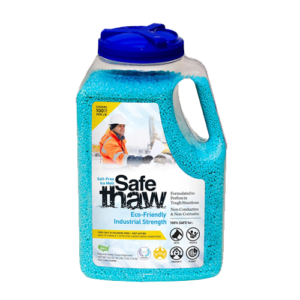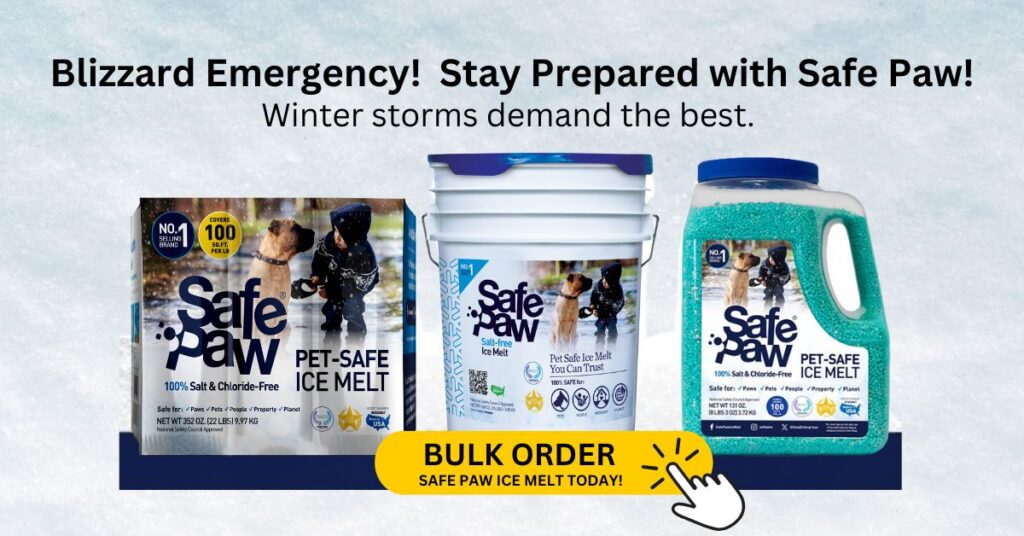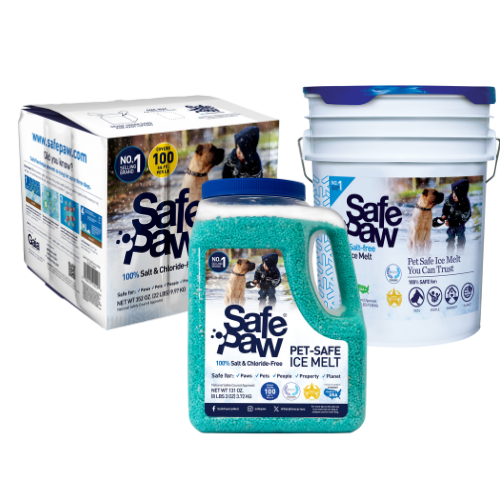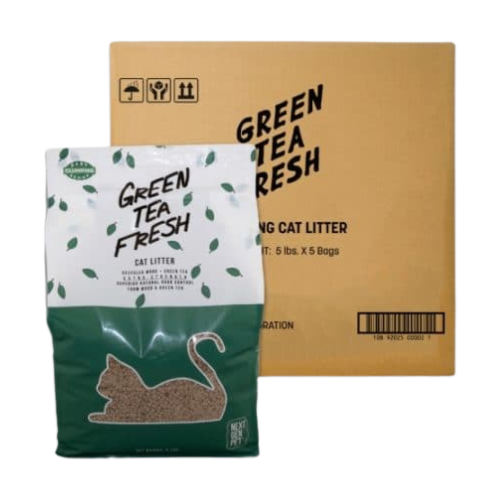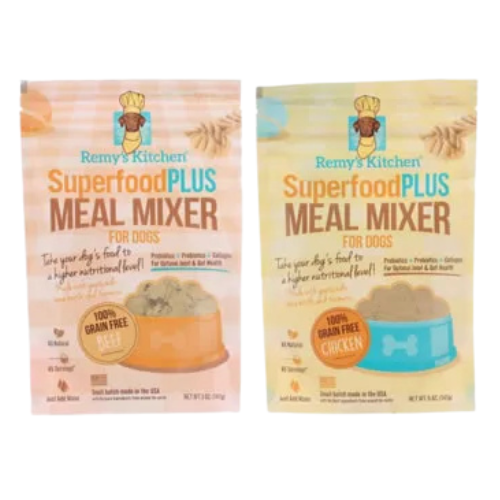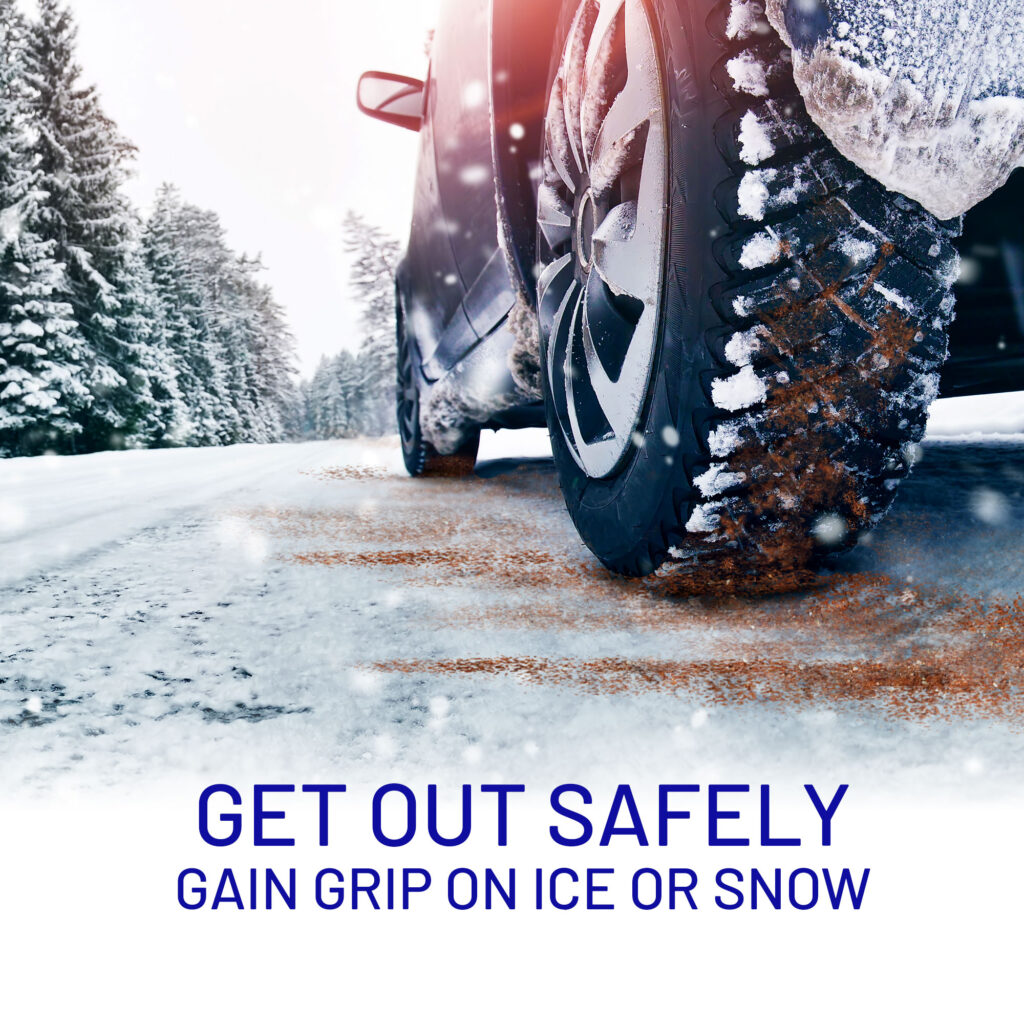4 Ways In Which Ice Melt Harms Your Concrete
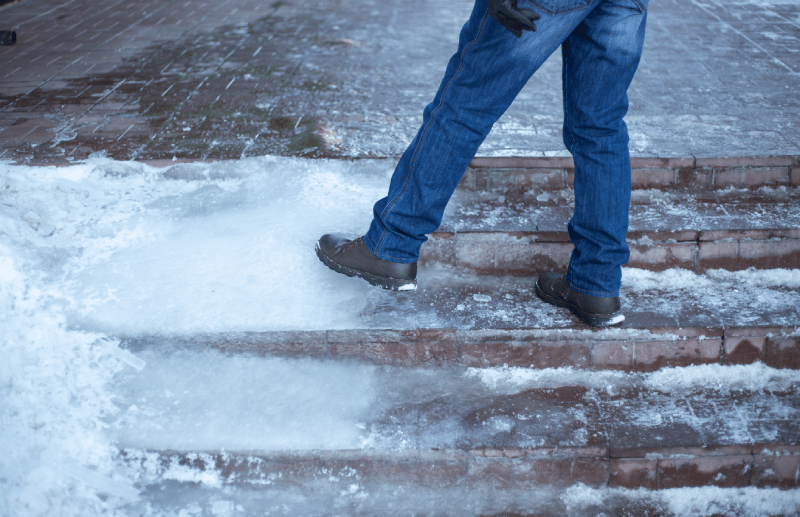
Get your sweaters and blankets out because the most awaited season is here, winters. With winters come a series of festivals and holidays. However, these aren’t the only things that come along with it. Some things that can make you worry about the winters are ice and snow.
Why Do You Need To Worry About Ice And Snow?
While ice and snow are some of the most lucrative features of winters, they can also be dangerous if deposited around your house. Now that’s why you need to keep melting the snow around you from time to time.
But melting snow isn’t as easy as it seems to be. You need to be very picky about the method that you will be using. Or else you may have to face the consequences. For example, using the wrong ice melt can harm your concrete in multiple ways.
Here are four ways ice melts can harm your concrete and why you need ice melt safe for pavers.
Freeze/Thaw Cycle Damage
Freeze/Thaw damage is the most common damage that happens because of the wrong ice melting process. To put it simply, when the ice melts, it turns to water, and when the cracks in concrete absorb the water, the water freezes and then expands the cracks. This expansion, in turn, causes pressure on this build-up, and with time the build-up exceeds the limit that the concrete could withstand.
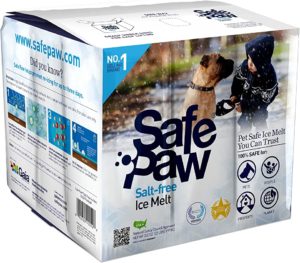
Pet Friendly Ice Melt – Safe Paw!
The Original and the #1 Child and Pet Safe Ice Melt for over 20 years. Guaranteed environmentally safe – will not harm waterways and sensitive wetlands.
Formation Of Subflorescence
Do you know what is “subflorescence”? It’s essential to understand what it is if you use rock salt as an ice melt. When you use an excess of rock salt to melt the ice, the extra salt used can end up anywhere and affect you. For example, if it stays on a concrete surface, it can recrystallize in the pores of the surface and can lead to chipping and spalling, and this process of recrystallization is known as subflorescence.
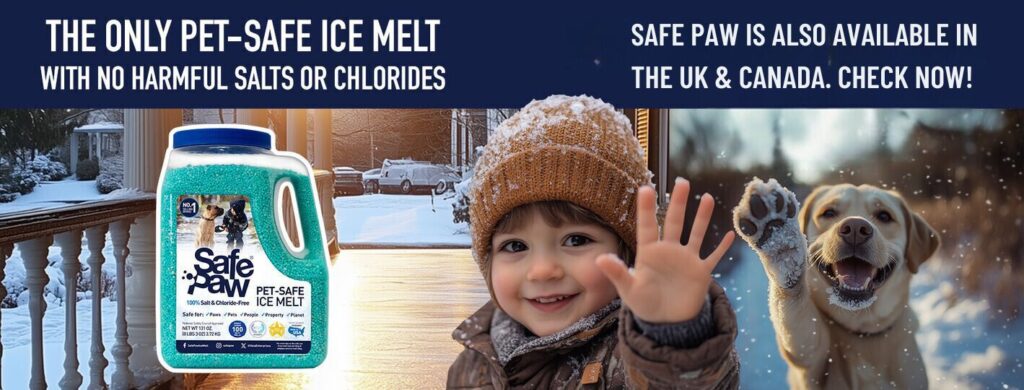
Salt Corrosion
Sometimes subflorscence isn’t the only issue caused due to rock salt. If the salt seeps into cracks and remains there, the metals used inside can also rust and corrode. Once rust and corrosion start, it pushes out the surrounding concrete and that results in cracks and spawnlings.
Chemical Damage
As per American Concrete Institute (ACI), several chemicals can be for melting ice. But in the long run, they are damaging concrete surfaces. Such chemicals include Ammonium Nitrate, Calcium Sulfate, Aluminum Chloride, Magnesium Chloride, Sodium Cyanide, etc. So before you choose an ice melt safe for pavers, make sure you do not use these chemicals.
This is where Safepaw can be your go-to ice melt. It’s 100% safe for concrete and doesn’t harm the concrete in any way. The best part is, it’s easy to use and can be very effective for melting ice without harming the environment.
Pet Safe Ice Melt – Safe Paw
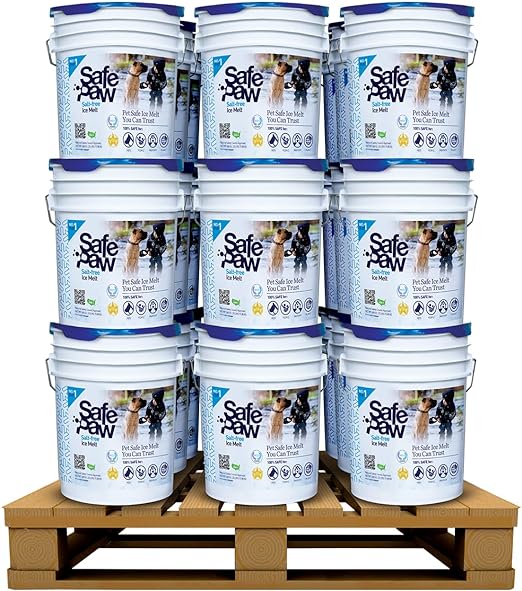
Safe Paw, Child Plant Dog Paw & Pet Safe Ice Melt -35lb, 36 Pails

Safe Paw, Child Plant Dog Paw & Pet Safe Ice Melt -22lb, 100Bboxes
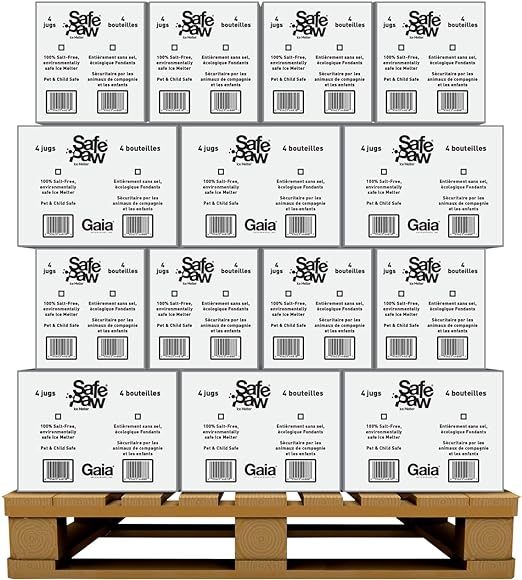
Safe Paw, Child Plant Dog Paw Pet Safe Ice Melt, 160 Jugs
Pet Products Powered By EzPz.pet
Concrete-Safe Ice Melt Options: Navigating Winter with Care
Navigating through icy conditions requires more than just a quick fix; it demands a solution that safeguards not just the people and pets using the pathways but also the pathways themselves. Here’s a roundup of various concrete-safe ice melt options, each with its unique properties and suitability for use around homes and in environments sensitive to chemical exposure:
- Calcium Chloride—sounds strong, right? It’s a powerhouse in the freezing cold, working magic even when the thermometer dips way low. But here’s the catch: it loves water a bit too much. Its ability to pull moisture from the air can be a boon for quick melting, but if you’re not careful, it might just be a bit too harsh on your concrete over time. Ever noticed more cracks than usual after winter? That could be why. It’s great when you’re in a pinch but remember, less is more.
- Magnesium Chloride– What about Magnesium Chloride? It’s the milder cousin. Works wonders down to -13°F and doesn’t pick fights with your pavement or plants. But, and there’s always a but, it’s still a chloride. Got to use it wisely, sprinkle just enough, and no more. Ever wonder if there’s a way to be both effective and gentle?
- Potassium Chloride– Potassium chloride is another eco-friendlier option, known for being less harsh on environments than other chlorides. Effective in temperatures just below 25°F, it’s suitable for mild to moderate winter climates. Its lower corrosivity makes it a safer choice for concrete and vegetation, though its effectiveness wanes in severe cold.
- CMA (Calcium Magnesium Acetate) – CMA, or calcium magnesium acetate, presents an even gentler approach. It doesn’t corrode metal or harm vegetation, which makes it ideal for areas with lots of plant life and wildlife. Effective at preventing ice from bonding to surfaces, CMA works best at temperatures close to or above 20°F and is preferred for its minimal environmental impact.
- Beet Juice Deicer– The beet juice deicer is a novel approach, utilizing the natural lowering of the freezing point by the sugars in beet juice. This method is not only effective but also environmentally friendly, adding a sticky residue that helps prevent re-freezing. It’s particularly useful in areas where environmental conservation is a priority.
- Sand– For those seeking purely mechanical solutions, sand doesn’t melt ice but provides traction on slippery surfaces. It’s inert, offering no risk of chemical damage to concrete, making it ideal for preserving infrastructure while still ensuring safety.
- Sawdust, Wood Shavings, and Straw– Similarly, sawdust, wood shavings, and straw can be used to create a non-slip surface over ice. While these materials do not melt ice, they increase traction and are completely safe for concrete surfaces. They’re especially useful in rural or ecologically sensitive areas, where minimal impact on the environment is crucial.
Ultimate Ice Melt Solution: Safe Paw
While the above options provide various benefits depending on the specific needs and environmental concerns, Safe Paw emerges as the superior choice for those seeking an all-encompassing solution. It is especially tailored to be safe on concrete, environmentally friendly, and completely non-toxic, making it the best choice for households with pets and children.
Safe Paw is unique because it is 100% salt-free and formulated with a dual-effect compound. The outer layer of Safe Paw granules liquefies upon contact with ice, breaking it down quickly. This initial reaction is followed by the core of the granule penetrating deeper to destabilize ice at a molecular level, ensuring a thorough melt even in very low temperatures.
To Conclude-
So this was all about how using the wrong ice melts can harm your concrete. While using good quality concrete is vital, choosing a good ice melt is crucial too. A good ice melt includes chemicals that won’t harm your concrete. For example, urea for ice melting is an effective solution here.
With Safepaw, you do not need to worry about your concrete or even the environment as it doesn’t include any harmful chemicals. It is the best ice melt out there which can help you enjoy the winters without worrying about snow or ice.
Stay safe and confident this winter with Traction Magic!
This innovative, 100% natural product offers instant traction on any icy surface. Whether you’re navigating your sidewalk, steps, or driveway, Traction Magic helps you stay upright and prevents falls.
Other Ice Melt Products
Walk On Ice
Prevent slips at home, work or on the go, The handy disposable canister can be taken everywhere, with the same 100% naturally occurring minerals that provide instant traction on ice or snow.
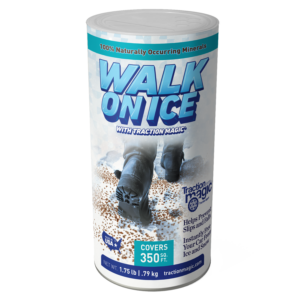
Safe Thaw
Imagine an ice melt you can put down and never worry about. It won’t harm pets, kids and your property. That’s Safe Thaw. Unlike anything else on the market, Safe Thaw can change how winter affects our planet.
